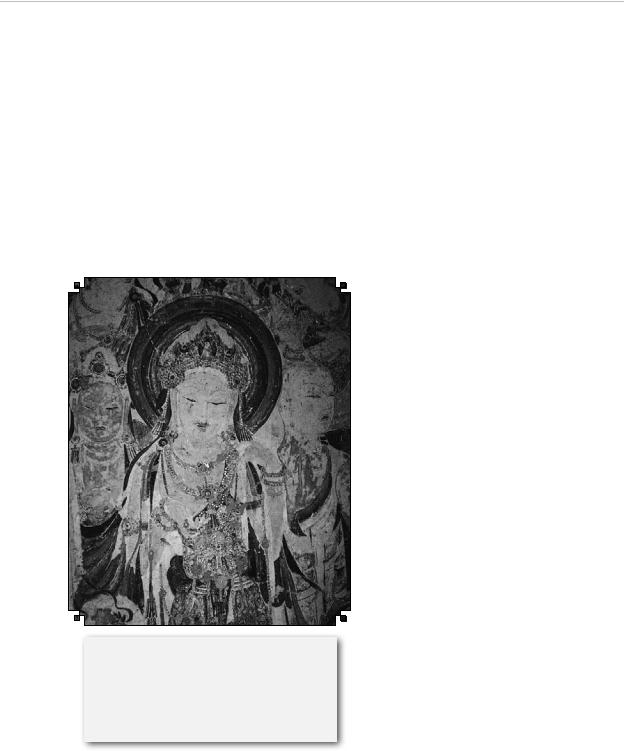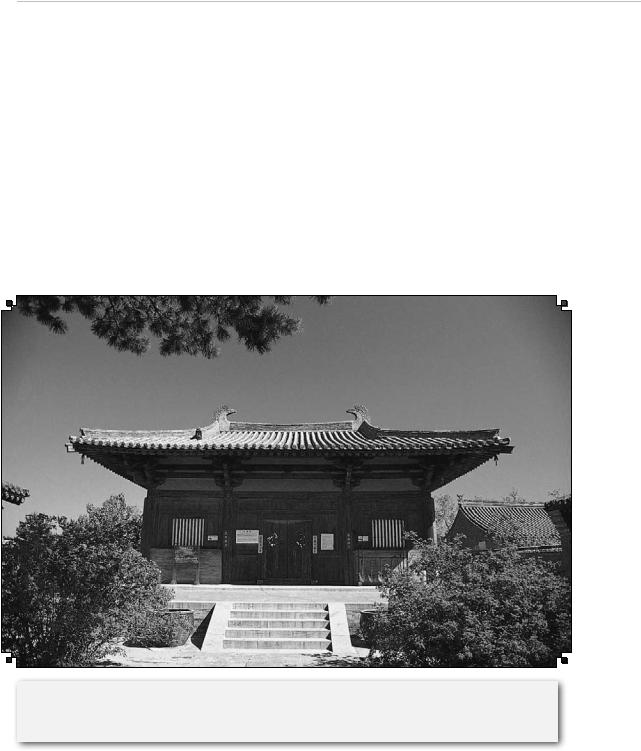
- •CONTENTS
- •INTRODUCTION
- •PREHISTORY
- •EARLY HUMANS
- •NEOLITHIC PERIOD
- •CLIMATE AND ENVIRONMENT
- •FOOD PRODUCTION
- •MAJOR CULTURES AND SITES
- •INCIPIENT NEOLITHIC
- •THE FIRST HISTORICAL DYNASTY: THE SHANG
- •THE SHANG DYNASTY
- •THE HISTORY OF THE ZHOU (1046–256 BC)
- •THE ZHOU FEUDAL SYSTEM
- •SOCIAL, POLITICAL, AND CULTURAL CHANGES
- •THE DECLINE OF FEUDALISM
- •THE RISE OF MONARCHY
- •ECONOMIC DEVELOPMENT
- •CULTURAL CHANGE
- •THE QIN EMPIRE (221–207 BC)
- •THE QIN STATE
- •STRUGGLE FOR POWER
- •THE EMPIRE
- •DYNASTIC AUTHORITY AND THE SUCCESSION OF EMPERORS
- •XI (WESTERN) HAN
- •DONG (EASTERN) HAN
- •THE ADMINISTRATION OF THE HAN EMPIRE
- •THE ARMED FORCES
- •THE PRACTICE OF GOVERNMENT
- •RELATIONS WITH OTHER PEOPLES
- •CULTURAL DEVELOPMENTS
- •THE DIVISION OF CHINA
- •DAOISM
- •BUDDHISM
- •THE SUI DYNASTY
- •INTEGRATION OF THE SOUTH
- •EARLY TANG (618–626)
- •ADMINISTRATION OF THE STATE
- •FISCAL AND LEGAL SYSTEM
- •THE PERIOD OF TANG POWER (626–755)
- •RISE OF THE EMPRESS WUHOU
- •PROSPERITY AND PROGRESS
- •MILITARY REORGANIZATION
- •LATE TANG (755–907)
- •PROVINCIAL SEPARATISM
- •CULTURAL DEVELOPMENTS
- •THE INFLUENCE OF BUDDHISM
- •TRENDS IN THE ARTS
- •SOCIAL CHANGE
- •DECLINE OF THE ARISTOCRACY
- •POPULATION MOVEMENTS
- •GROWTH OF THE ECONOMY
- •THE WUDAI (FIVE DYNASTIES)
- •THE SHIGUO (TEN KINGDOMS)
- •BARBARIAN DYNASTIES
- •THE TANGUT
- •THE KHITAN
- •THE JUCHEN
- •BEI (NORTHERN) SONG (960–1127)
- •UNIFICATION
- •CONSOLIDATION
- •REFORMS
- •DECLINE AND FALL
- •SURVIVAL AND CONSOLIDATION
- •RELATIONS WITH THE JUCHEN
- •THE COURT’S RELATIONS WITH THE BUREAUCRACY
- •THE CHIEF COUNCILLORS
- •THE BUREAUCRATIC STYLE
- •THE CLERICAL STAFF
- •SONG CULTURE
- •INVASION OF THE JIN STATE
- •INVASION OF THE SONG STATE
- •CHINA UNDER THE MONGOLS
- •YUAN CHINA AND THE WEST
- •THE END OF MONGOL RULE
- •POLITICAL HISTORY
- •THE DYNASTY’S FOUNDER
- •THE DYNASTIC SUCCESSION
- •LOCAL GOVERNMENT
- •CENTRAL GOVERNMENT
- •LATER INNOVATIONS
- •FOREIGN RELATIONS
- •ECONOMIC POLICY AND DEVELOPMENTS
- •POPULATION
- •AGRICULTURE
- •TAXATION
- •COINAGE
- •CULTURE
- •PHILOSOPHY AND RELIGION
- •FINE ARTS
- •LITERATURE AND SCHOLARSHIP
- •THE RISE OF THE MANCHU
- •THE QING EMPIRE
- •POLITICAL INSTITUTIONS
- •FOREIGN RELATIONS
- •ECONOMIC DEVELOPMENT
- •QING SOCIETY
- •SOCIAL ORGANIZATION
- •STATE AND SOCIETY
- •TRENDS IN THE EARLY QING
- •POPULAR UPRISING
- •THE TAIPING REBELLION
- •THE NIAN REBELLION
- •MUSLIM REBELLIONS
- •EFFECTS OF THE REBELLIONS
- •INDUSTRIALIZATION FOR “SELF-STRENGTHENING”
- •CHANGES IN OUTLYING AREAS
- •EAST TURKISTAN
- •TIBET AND NEPAL
- •MYANMAR (BURMA)
- •VIETNAM
- •JAPAN AND THE RYUKYU ISLANDS
- •REFORM AND UPHEAVAL
- •THE BOXER REBELLION
- •REFORMIST AND REVOLUTIONIST MOVEMENTS AT THE END OF THE DYNASTY
- •EARLY POWER STRUGGLES
- •CHINA IN WORLD WAR I
- •INTELLECTUAL MOVEMENTS
- •THE INTERWAR YEARS (1920–37)
- •REACTIONS TO WARLORDS AND FOREIGNERS
- •THE EARLY SINO-JAPANESE WAR
- •PHASE ONE
- •U.S. AID TO CHINA
- •NATIONALIST DETERIORATION
- •COMMUNIST GROWTH
- •EFFORTS TO PREVENT CIVIL WAR
- •CIVIL WAR (1945–49)
- •A RACE FOR TERRITORY
- •THE TIDE BEGINS TO SHIFT
- •COMMUNIST VICTORY
- •RECONSTRUCTION AND CONSOLIDATION, 1949–52
- •THE TRANSITION TO SOCIALISM, 1953–57
- •RURAL COLLECTIVIZATION
- •URBAN SOCIALIST CHANGES
- •POLITICAL DEVELOPMENTS
- •FOREIGN POLICY
- •NEW DIRECTIONS IN NATIONAL POLICY, 1958–61
- •READJUSTMENT AND REACTION, 1961–65
- •THE CULTURAL REVOLUTION, 1966–76
- •ATTACKS ON CULTURAL FIGURES
- •ATTACKS ON PARTY MEMBERS
- •SEIZURE OF POWER
- •SOCIAL CHANGES
- •STRUGGLE FOR THE PREMIERSHIP
- •CHINA AFTER THE DEATH OF MAO
- •DOMESTIC DEVELOPMENTS
- •INTERNATIONAL RELATIONS
- •RELATIONS WITH TAIWAN
- •CONCLUSION
- •GLOSSARY
- •FOR FURTHER READING
- •INDEX

122 | The History of China
ministers and a number of other officials. But the apogee of the eunuchs’ power was brief, ending with the accession of Wuzong in 840. Wuzong and his minister, Li Deyu, managed to impose some restrictions on the eunuchs’ power, especially in the military.
In the second half of the 9th century the central government became progressively weaker. During Yizong’s reign (859–873) there was a resurgence of the eunuchs’ power and a constant fratricidal strife between eunuchs and officials at court. From the 830s onward the first signs of unrest and banditry had appeared in the Huai valley and Henan, and trouble spread to the Yangtze valley and the south beginning in 856. Major uprisings were led by Kang Quantai in southern Anhui in 858 and Qiu Fu in Zhejiang in 859. The situation was complicated by a costly war against the Nanzhao kingdom on the borders of the Chinese protectorate in Annam, which later spread to Sichuan and dragged on from 858 until 866. After the invaders had been suppressed, part of the garrison force that had been sent to Lingnan mutinied and, under its leader, Pang Xun, fought and plundered its way back to Henan, where it caused widespread havoc in 868 and 869, cutting the canal linking the capital to the loyal Yangtze and Huai provinces. In 870 war broke out again with Nanzhao.
Yizong was succeeded by Xizong (reigned 873–888), a boy of 11 who was the choice of the palace eunuchs. Prior to his ascension, Henan had repeatedly suffered serious floods. In addition, a wave
of peasant risings began in 874, following a terrible drought. The most formidable of them was led by Huang Chao, who in 878 marched south and sacked Guangzhou (Canton) and then marched to the north, where he took Luoyang in late 880 and Chang’an in 881. Although Huang Chao attempted to set up a regime in the capital, he proved cruel and inept. Hemmed in by loyal armies and provincial generals, in 883 he was forced to abandon Chang’an and withdraw to Henan and then to Shandong, where he died in 884. His forces were eventually defeated with the aid of Shatuo Turks, and the Tang court was left virtually powerless, its emperor a puppet manipulated by rival military leaders. The dynasty lingered on until 907, but the last quarter century was dominated by the generals and provincial warlords. With the progressive decline of the central government in the 880s and 890s, China fell apart into a number of virtually independent kingdoms. Unity was not restored until long after the Song dynasty was established.
Cultural develOPMENTS
The Influence of Buddhism
The Tang emperors officially supported Daoism because of their claim to be descended from Laozi, but Buddhism continued to enjoy great favour and lavish imperial patronage through most of the period. The famous pilgrim Xuanzang, who went to India in 629 and returned in

The Tang Dynasty | 123
645, was the most learned of Chinese monks and introduced new standards of exactness in his many translations from Sanskrit. The most significant development in this time was the growth of new indigenous schools that adapted Buddhism to Chinese ways of thinking. Most prominent were the syncretistic Tiantai school, which sought to embrace all other schools in a single hierarchical system (even reaching out to include Confucianism), and the radically antitextual, antimetaphysical southern Chan
Guanyin and attendant bodhisattvas, detail of a painted mural, early 8th century, Tang dynasty, from Cave 57, Dunhuang, Gansu province, China. Chen Zhi’an/ChinaStock Photo Library
(Zen) school, which had strong roots in Daoism. The popular preaching of the salvationist Pure Land sect was also important. After the rebellion of An Lushan, a nationalistic movement favouring Confucianism appeared, merging with the efforts of Tiantai Buddhism to graft Buddhist metaphysics onto Classical doctrine and lay the groundwork for the Neo-Confucianism of the Song era.
In 843–845 the emperor Wuzong, a fanatical Daoist, proceeded to suppress Buddhism. One of his motives was economic. China was in a serious financial crisis, which Wuzong and his advisers hoped to solve by seizing the lands and wealth of the monasteries. The suppression was far-reaching: 40,000 shrines and temples—all but a select few—were closed, 260,000 monks and nuns were returned to lay life, and vast acreages of monastic lands were confiscated and sold and their slaves manumitted. The suppression was short-lived, but irreparable damage was done to Buddhist institutions. Buddhism had already begun to lose intellectual momentum, and this attack on it as a social institution marked the beginning of its decline in China.
Several types of monastic communities existed at the time. Official temples set up by the state had large endowments of land and property and large communities of monks who chose their own abbot and other officers. There were vast numbers of small village temples, shrines, and hermitages; these were often privately established, had little property,

124 | The History of China
and were quite vulnerable to state policies. In addition, private temples or “merit cloisters” were established by great families, often to allow the family to donate its property and have it declared tax-exempt.
A monastic community was free of all obligations to the state. It was able to hold property without the process of division by inheritance that made the long-term preservation of individual and family fortunes almost impossible in Tang times. It acquired its wealth from those taking monastic vows, from gifts of
pious laypersons, and from grants of lands by the state. The lands were worked by monastic slaves, dependent families, lay clerics who had taken partial vows but lived with their families, and tenants. Monasteries also operated oil presses and mills, and they were important credit institutions, supplying loans at interest and acting as pawnshops. They provided lodgings for travelers, operated hospitals and infirmaries, and maintained the aged. One of their most important social functions was offering primary education. The temples maintained their own
Main hall of Nanchan Temple, Mount Wutai, Shanxi province, China, AD 782 or earlier, Tang dynasty; reconstructed 1974–75. Christopher Liu/ChinaStock Photo Library

The Tang Dynasty | 125
schools, training the comparatively large proportion of the male population, which, although not educated to the standards of the Confucian elite or the clergy, was nevertheless literate.
Trends in the Arts
In literature the greatest glory of the Tang period was its poetry. By the 8th century, poets had broken away from the artificial diction and matter of the court poetry of the southern dynasties and achieved a new directness and naturalism. The reign of Xuanzong (712–756)—known as Minghuang, the Brilliant Emperor—was the time of such great figures as Li Bai, Wang Wei, and Du Fu. The rebellion of An Lushan and Du Fu’s bitter experiences during it brought a new note of social awareness to his later poetry. This appears again in the work of Bai Juyi (772–846), who wrote verse in clear and simple language. Toward the end of the dynasty a new poetic form, the ci, in a less regular
metre than the five-word and seven-word lushi and meant to be sung, made its appearance. The guwen, or “ancient style,” movement grew up after the rebellion of An Lushan, seeking to replace the euphuistic pianwen (“parallel prose”) then dominant. It was closely associated with the movement for a Confucian revival. The most prominent figures in it were Han Yu and Liu Zongyuan. At the same time came the first serious attempts to write fiction, the so-called chuanqi, or “tales of marvels.” Many of these Tang stories later provided themes for the Chinese drama.
The patronage of the Tang emperors and the general wealth and prosperity of the period encouraged the development of the visual arts. Though few Tang buildings remain standing, contemporary descriptions give some idea of the magnificence of Tang palaces and religious edifices and the houses of the wealthy. Buddhist sculpture shows a greater naturalism than in the previous period, but
Du fu
Du Fu (b. 712—d. 770) is often considered the greatest Chinese poet of all time. After a traditional Confucian education, he failed the important civil service examinations and consequently spent much of his life wandering, repeatedly attempting to gain court positions, with mixed success. His early poetry, which celebrates the natural world and bemoans the passage of time, garnered him renown. He su«ered periods of extreme personal hardship, and as he matured his verse began to express profound compassion for humanity. An expert in all the poetic genres of his day, he is renowned for his superb classicism and skill in prosody, though many of the subtleties of his art do not survive translation.
